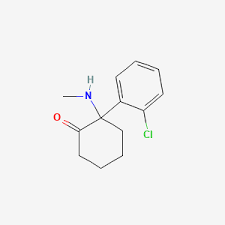Blog
Ketamine Crystals Dosage

Ketamine Crystals Dosage, Ketamine crystals are a form of the dissociative anesthetic ketamine, which has been used for decades in both medical and veterinary settings. In recent years, ketamine has also gained attention for its potential therapeutic use in treating depression, PTSD, and chronic pain. However, when discussing ketamine crystals dosage, it is essential to understand both the potential benefits and the risks associated with improper use.
What Are Ketamine Crystals?
Ketamine typically comes in liquid form for medical injections, but in recreational or off-label use, it can appear as a white crystalline powder—often referred to as ketamine crystals. These crystals can be crushed and insufflated (snorted), ingested, or dissolved for various applications.
Medical vs. Recreational Use
In medical settings, ketamine is administered by trained professionals who calculate the dosage based on body weight, purpose, and route of administration. The therapeutic doses used in controlled environments are significantly lower than those commonly used recreationally.
-
Medical Ketamine Dosage (for anesthesia): 1-2 mg/kg intravenously
-
Sub-anesthetic Therapeutic Dosage (for depression): 0.5 mg/kg over 40 minutes via IV
Recreational Ketamine Crystals Dosage
Recreational users often self-administer ketamine crystals without guidance, which carries significant risks. Dosage can vary based on tolerance, body weight, and desired effect. However, some general estimates include:
-
Threshold dose: 10–25 mg
-
Light dose: 25–50 mg
-
Common dose: 50–100 mg
-
Strong dose: 100–150 mg
-
K-hole dose: 150–250+ mg
These values assume insufflation (snorting). Other routes like oral ingestion or intramuscular injection require different dosage calculations due to changes in bioavailability.
Dangers of Inaccurate Dosage
Taking too much ketamine—especially in crystal form—can lead to a dissociative state known as the “K-hole,” where users may experience intense hallucinations, loss of motor control, and a sense of detachment from reality. This can be terrifying and dangerous, especially without supervision.
Long-term or high-dose use can also result in:
-
Bladder and kidney damage (ketamine cystitis)
-
Memory impairment
-
Psychological dependence
-
Increased risk of accidents or injury
Safe Use and Harm Reduction
If ketamine is being used outside of a medical context (which is not recommended), users should:
-
Start with a low dose to assess sensitivity.
-
Use a precise scale to measure ketamine crystals dosage accurately.
-
Avoid mixing with other substances, especially depressants like alcohol or benzodiazepines.
-
Have a trusted, sober person present.
-
Allow time for recovery and hydration post-use.
Conclusion
Understanding ketamine crystals dosage is vital to minimizing the risks associated with its use. Whether used medically or otherwise, dosage should be approached with care and knowledge. As research into ketamine’s therapeutic potential continues to grow, so too must public awareness of the correct and safe ways to handle this powerful compound.
